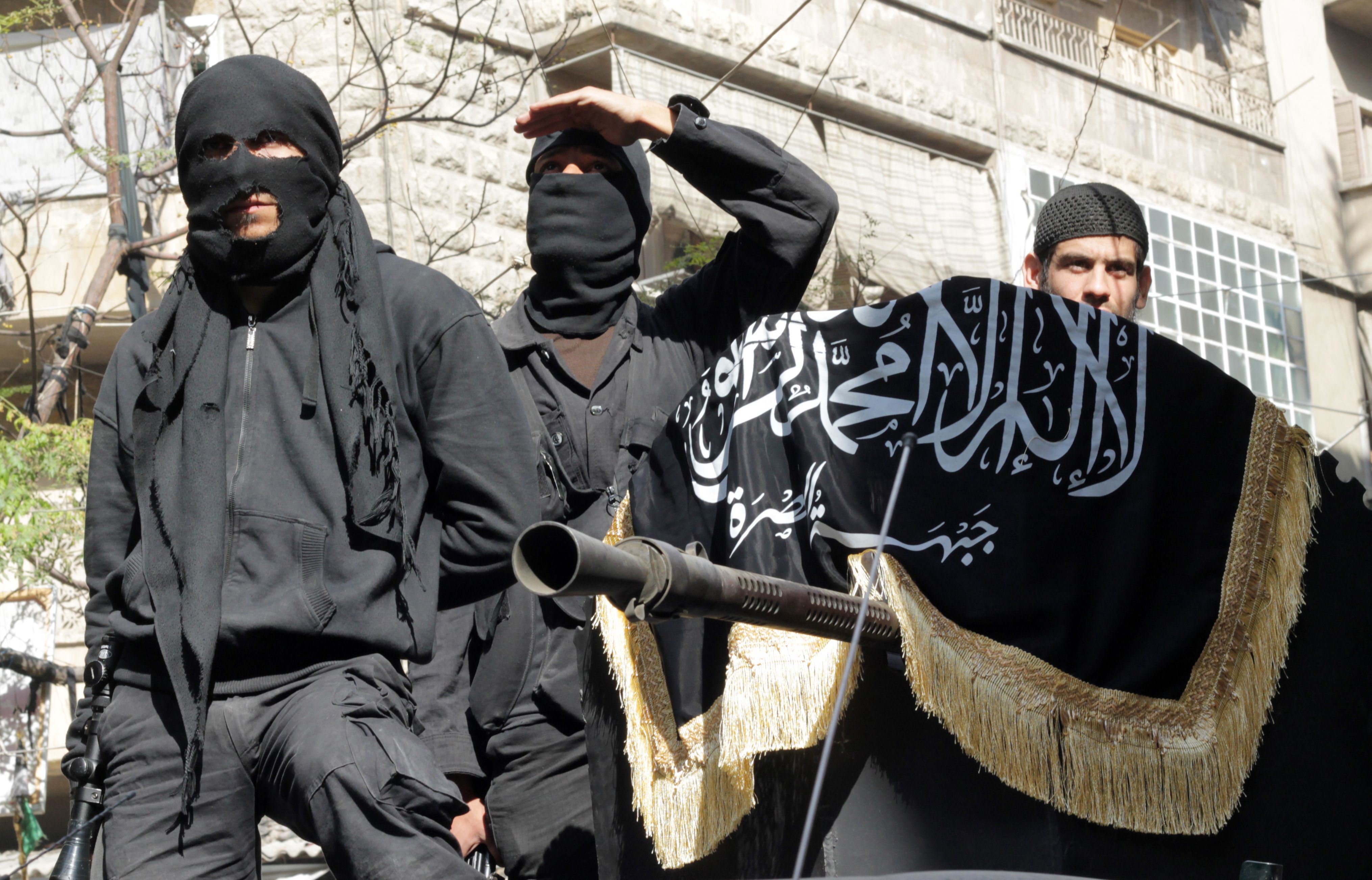Rebels Capture Last Syrian Town in IBLIP Province
Nusra Front fighters
NEW DELHI: The Syrian army has pulled back from the city of Ariha, leaving the entire province of Idlib in northwestern Syria near the Turkish border devoid of government presence. The city was seized by a coalition of rebel groups called Jaish al Fateh, or Conquest Army. Syria’s al Qaeda offshoot Nusra Front is part of this coalition.
"There are heavy clashes between the army and the terrorists of Jabahat al Nusra who infiltrated inside the city," said an army statement on Syrian state television. The army then admitted that it had retreated from the city.
The fall of Ariha presents a major blow for Syrian President Bashar al Assad, who has been fighting a range of opposition groups in the country. Whilst the US-led coalition is opposed to Assad, the situation itself is characteristic of the trouble in the region.
The US-led coalition, therefore, has extended support to various militias that are fighting Assad. Amongst these militias are the Al Qaeda backed Nusra Front and the Islamic State -- the US former and current top “enemy” respectively.
The Islamic State, in fact, emerged from amongst these opposing militias. In September 2013, the group overran the Syrian town of Azzaz, with the Syrian Observatory of Human Rights labelling the group as the “strongest group in Northern Syria” by November 2013.
As the group expanded from Iraq into Syria -- establishing a stronghold in Ar-Raqqah province -- it renamed itself the "Islamic State of Iraq and the Levant", or the "Islamic State of Iraq and al-Sham” in 2013, under the supervision of its current leader, Abu Bakr al-Baghdadi, who took over in 2011. The name change was based on the Baghdadi’s intent to merge ISI with the Syria-based Nusra Front. Nusra Front and Al Qaeda leaders immediately rejected the merger.
The group has often been referred to as an Al Qaeda off-shoot, but the exact nature of its relations with the Al Qaeda are not clear. In recent months, both groups have made statements disassociating themselves from the other, with ISIL leader Al-Adnani saying, ““the ISIL is not and has never been an offshoot of Al Qaeda.”
When the group captured Mosul in June this year, the international community was taken by surprise at the strength of a relatively unknown Iraqi group. IS’ gains in Iraq are directly linked to its operations in Syria, where it had come to control large swathes of territory in its fight, along with other groups, against Syrian President Bashar-al-Assad.
The advance of anti-government forces in Syria, was made possible in turn, by the United States and allies assistance to Sunni rebels, who share with the US the objective to topple Alawite leader Assad. The US greenlighted Turkish and Saudi aid to anti-Assad rebels, supplied these groups with material and financial assistance, and used the CIA to train rebels at a secret base in Jordan.
This not to suggest that the rebels in Syria present a homogenous group, as there is considerable infighting, with the IS militants facing setbacks at the hands of the Islamic Front and the Free Syrian Army, for instance. However, affiliations change rapidly, and the IS group -- when it was known as Al Qaeda in Iraq -- had expressed solidarity with the rebels in Syria, following which the US immediately increased aid to anti-Assad forces. The aid began as non-lethal aid, but following a June 2013 White House statement that said there was reason to believe that Assad had been using chemical weapons against rebels, the US decided to extend lethal aid to anti-Assad militias. The total aid given by the US to rebels in Syria, according to USAID figures, amounts to over $1 billion.
For FY2015, the US Congress is reportedly seeking $2.75 billion in funds to finance its role in the Syrian crisis, of which $1.1 billion is marked for humanitarian aid, $1 billion for regional stabilisation and $500 million for DOD-led arming and training of opposition forces.
The United States’ dual policy -- of complicit support and aggressive resistance, simultaneously -- has shaped the new Middle East, which in turn, is characterised by the factors that are invoked to explain IS’ rise: growing sectarianism, the absence of an Arab governance model, and an emerging security vacuum in the region.





